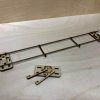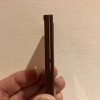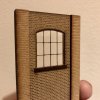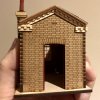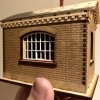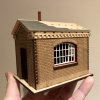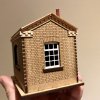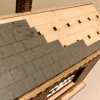On Martyns
@3 LINK Church Norton thread he is building a one of my Signal Box kits and rather well too. Martyn used filler instead of paint to fill the mortar courses and I just so happened to have the same brand of filler in my decorating stash. I've tried to use filler before but I found it was a waste of time as the filler I was using was too rough and destroyed the painted work. So not wanting to destroy a building and wanting to do a useful experiment I made up one of my cameo pieces and painted that up. The painting of the brickwork has been well documented before and I won't bore you with all that, but needless to say, the actual painting was about 10minutes work, waiting around for the paint to dry, I left overnight.
This evening, the paint work nice and dry I tired Martyns method. I rubbed the filler in small amounts with my finger tip and worked into all the mortar line and wipe off with same finger until is was all done. I used a scalpel to just clean off the excess and for the couple of minutes work it took I was impressed. So here is my result. No weathering, just paint and mortar.

Looks like the station has been earmarked for closure. The Ticket office door windows have been boarded up already.
I'll do a bigger piece this weekend, and try colouring the filler first.





